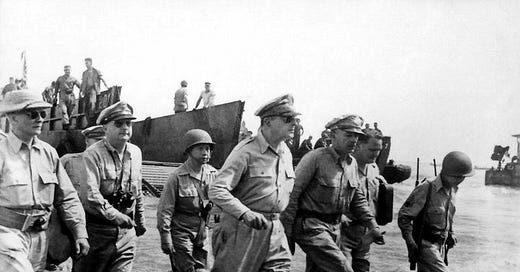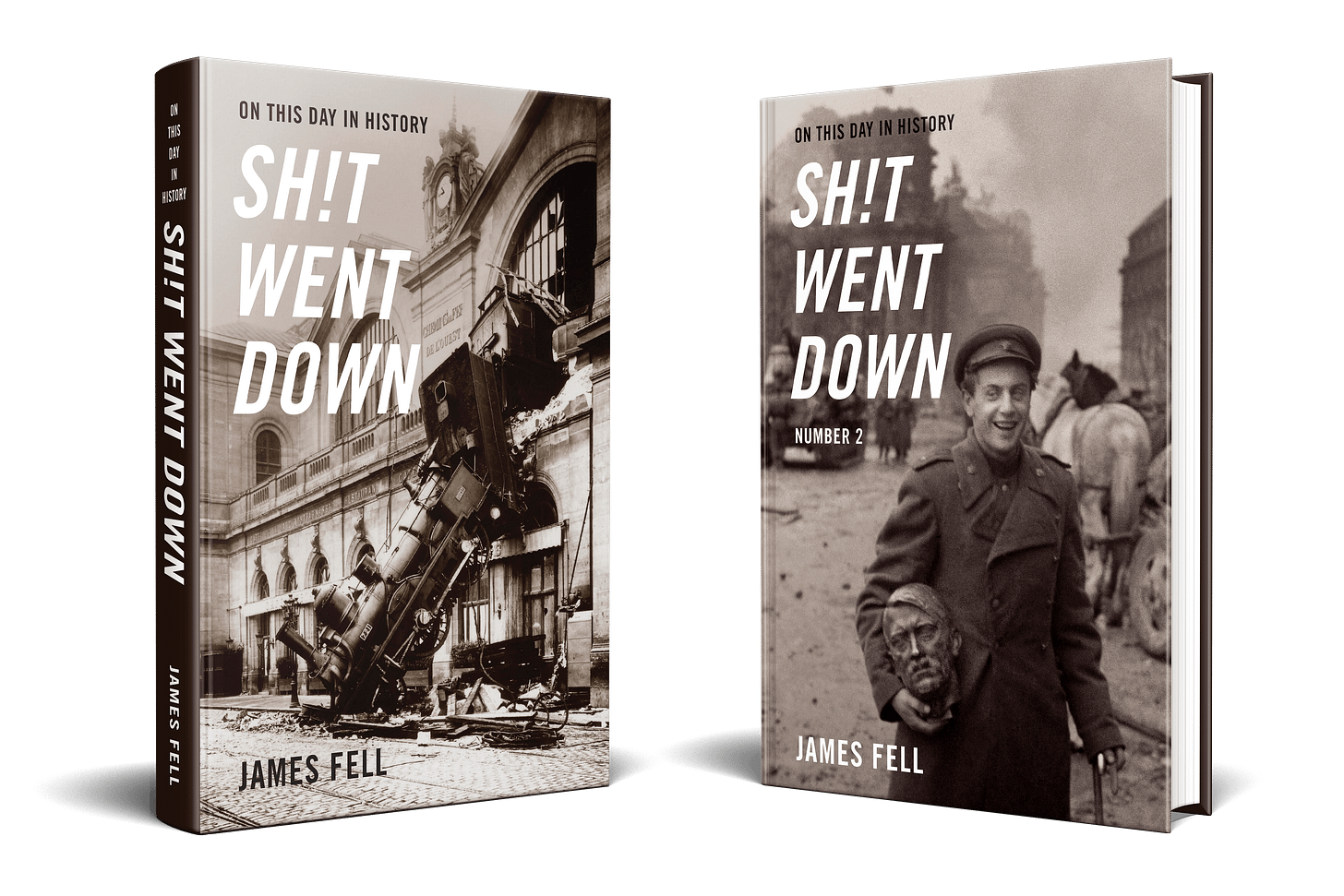Subscribers can listen to the audio of this post here.
In March of 1942, as the Japanese forces surrounded American troops, General Douglas MacArthur was ordered by President Roosevelt to escape from the Philippines rather than be taken prisoner. Upon arriving safely in Australia, MacArthur said of having to flee the Philippines, “I shall return.” This is the story of the men who permitted that return.
--On This Day in History, Shit Went Down: October 20, 1944--
Just five months after fleeing the Philippines, the Americans were back on the offensive with the Battle of Guadalcanal in the South Pacific. Over the next three years the U.S. forces would gradually bite chunks out of Japan’s new empire by taking back various islands one after another.
Over 15,000 Americans and 60,000 Filipino soldiers surrendered and were taken as prisoners of war by the Japanese. It was the largest contingent of U.S. soldiers ever to surrender to an enemy force. Going back to the Philippines wasn’t only about reclaiming territory but rescuing those who had been kept for two-and-a-half years in horrific conditions. The Philippines is comprised of 7,100 islands, and the amphibious attack began on October 20, 1944, on the island of Leyte. On that day General MacArthur waded ashore and proclaimed, “I have returned.” No word on if he then added, “Suck on that, motherfuckers.”
The Americans arrived in overwhelming force. The battle for the single island would last over two months, during which 3,504 American soldiers would lose their lives. But the Japanese paid a much higher price, with 49,000 dead, more than three-quarters of them from starvation and diseases related to malnutrition as they were cut off from supplies.
With so many islands occupied and such vicious resistance from the Japanese, the Americans would never fully retake the islands by the end of the war. There was still fighting taking place when orders from Tokyo were sent to Japanese commanders in the Philippines to surrender on August 15, 1945, six days after the second nuclear device was detonated over Nagasaki. Not all of them got the message. One Japanese soldier in the Philippines continued to fight on for another 29 years.
Forty percent of American soldiers held by the Japanese died from either disease, starvation, or abuse. As the Americans moved through the Philippines some Japanese murdered their prisoners, as was the case with the Palawan Massacre of 139 Allied prisoners in December 1944. These killings had the Allies saying holy Jesus fuckfarts we need to get those guys out of there ASAmotherfuckingP. This prompted a series of rescue raids of POW camps to prevent further atrocities. One such rescue at the Cabanatuan prison camp on January 30, 1945, became known as The Great Raid. Working with Filipino guerrilla fighters, American soldiers rescued over 500 POWs from the camp who were in danger of being massacred.
Japan would not issue an official apology for its treatment of American POWs until 2009.
Subscribe for access to cool shit:
VOLUME II ON SALE NOW! Get Volumes I and II of ON THIS DAY IN HISTORY SH!T WENT DOWN





